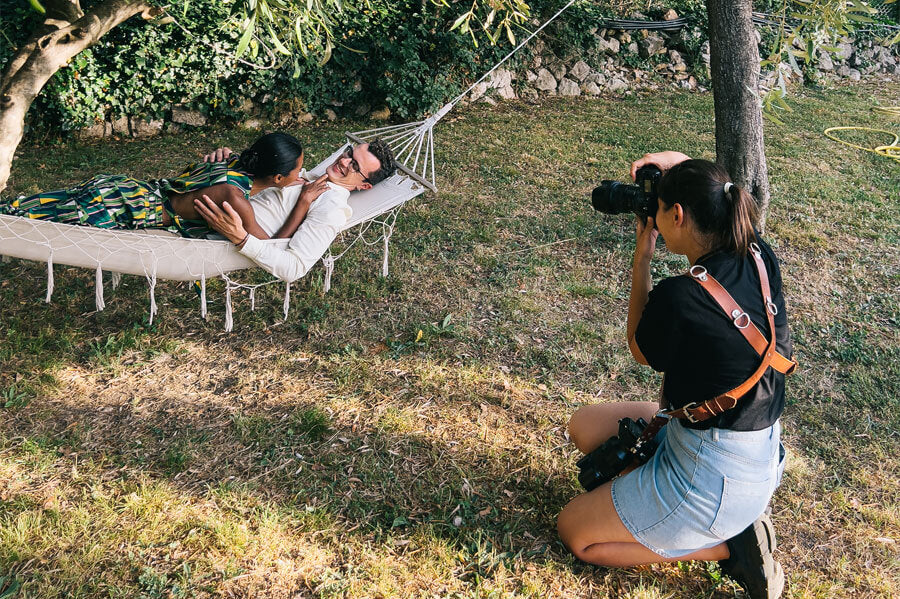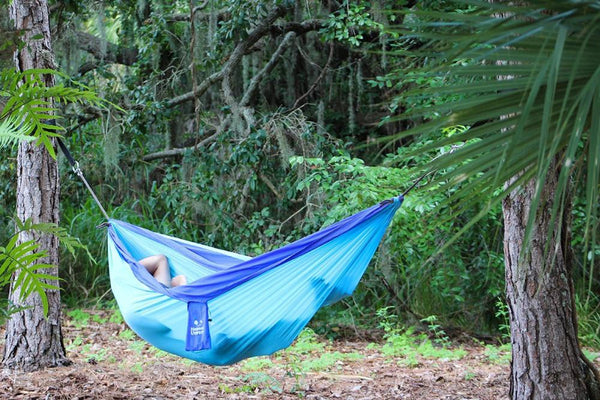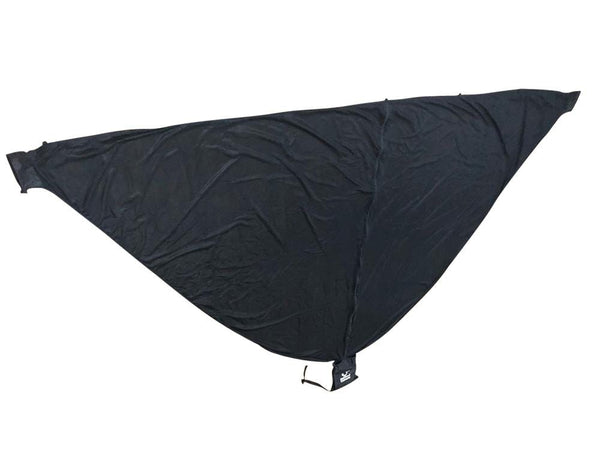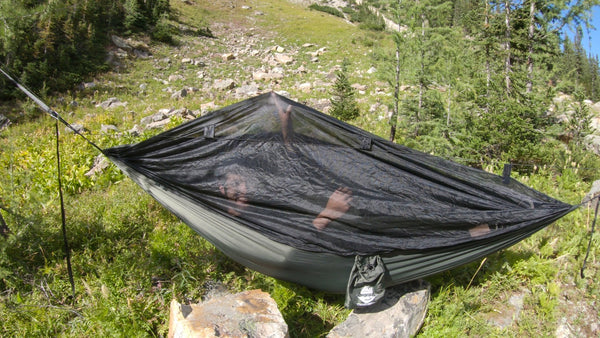FREE SHIPPING on most orders $25+ HAMMOCK BUYING GUIDE
Menu
-
-
Hammocks
-
Hammock Stands
-
Hammocks with Stands
-
Hanging Hammock Chairs
- View all Hammock Chairs
- Brazilian Style Hammock Chairs
- Colombian Hammock Chairs
- Mayan Hammock Chairs
- Mayan Hammock Chairs Deluxe
- Universal Hammock Chair Stand
- U Hammock Chair Stand
- Brazilian Hammock Chair with Universal Chair Stand
- Colombian Hammock Chair with Universal Chair Stand
- Mayan Hammock Chair with Universal Chair Stand
- Mayan Hammock Chair Deluxe with Universal Stand
-
Accessories
- Gift Cards
- Tools and Guides
- Bargain Bin
-
- 1-800-207-4761
- Login

FREE SHIPPING on most orders $25+ HAMMOCK BUYING GUIDE
Photography Basics: Capturing the World Through Your Lens
January 19, 2024 8 min read

Audio Version
Welcome to the world of photography, where every snapshot tells a story and every moment holds the potential for a masterpiece. Whether you're holding a high-tech DSLR, a compact mirrorless camera, or just your trusty smartphone, the thrill of capturing life's moments is universal.
Photography is more than a hobby; it's a way to freeze time, to preserve memories, and to share your unique perspective with the world.
But have you ever considered the unusual angles and creative opportunities that come from lounging in a hammock? Picture this: you, cradled comfortably in your hammock, camera in hand, ready to capture the beauty of the world from an entirely new viewpoint. From this relaxed position, your creativity can soar as high as the treetops above you.
Understanding Your Equipment
Before you dive into the vast ocean of photography, let's talk about your most essential tool: the camera. The market is flooded with options, from high-end DSLRs that promise unparalleled clarity to mirrorless wonders that pack professional features into a compact body.
And let's not forget the powerful camera that's probably in your pocket right now – your smartphone.
Choosing the right camera is like picking the right pair of shoes for a hike; it all depends on the terrain you plan to explore. A DSLR might be your companion for its versatility and depth, but a smartphone can be just as mighty for a spontaneous click. It’s not just about the price tag; it’s about what feels right in your hands, what aligns with your vision.
As you ponder over megapixels and sensors, remember that the best camera is the one that's with you. Whether it’s a high-end model or a humble phone camera, each has the potential to capture stunning images, especially when used from a unique vantage point – say, the comfort of your hammock, swaying gently under a canopy of leaves.
Mastering Camera Settings
Stepping into the world of photography, you'll quickly find that mastering your camera settings is akin to learning the language of your instrument. It’s about understanding how to communicate with your camera to capture the images you envision.
Three fundamental aspects form the pillars of photography: ISO, shutter speed, and aperture. Together, they're known as the Exposure Triangle, a trio that'll be your best friends on this visual journey.
Let's break it down. ISO refers to the camera sensor's sensitivity to light. A lower ISO number means less sensitivity and is ideal for those bright, sunny days spent lounging in your hammock with your camera. But as the sun dips below the horizon, a higher ISO might just be your ticket to capturing the twilight magic.
Shutter speed, on the other hand, is all about timing. It's the duration your camera's shutter is open, exposing light to the sensor. Fast shutter speeds freeze motion – think of the water droplets suspended in air as your friend jumps into the lake. Slow shutter speeds create a blur effect, perfect for capturing the serene flow of a river or the rustling leaves above you.
Then there’s aperture, the eye of your camera. It controls how much light gets in and also affects the depth of field. A wide aperture (a lower f-number) blurs your background, bringing a dreamy focus to your subject.
A narrow aperture (a higher f-number), meanwhile, keeps everything in sharp focus, ideal for those landscape shots capturing the vastness above you.
Balancing these settings is key. It's a dance of light and timing, one where your intuition and creativity play leading roles. With each adjustment, you’re not just capturing a scene; you're telling a story, your story.
The Art of Composition
Composition in photography is much like composing a piece of music; it's about arranging elements harmoniously. The Rule of Thirds is your starting point. Imagine dividing your frame into a grid of nine equal segments.
Placing your subject along these lines or their intersections creates a more balanced, engaging picture. It's like finding the perfect spot to hang your hammock – it just feels right.
But rules are meant to be experimented with, aren't they? Play around with leading lines, like a pathway or a shoreline, to guide the viewer's eye through your image.
Use framing to enclose your subject, much like the canopy of trees that envelopes you in your hammock. And don't forget about the power of symmetry and patterns – they add a compelling rhythm to your visuals, much like the gentle sway of your hammock.
Perspective is another key player. The way you view your subject can completely alter the story you’re telling. Have you tried photographing from the comfort of your hammock? It offers a unique angle, one that not only adds an element of creativity but also infuses your images with a sense of relaxation and intimacy.
Whether it's bending down to capture the intricate details of a flower or climbing up a hill for a panoramic view, changing your perspective can transform the mundane into the magnificent. It’s about seeing the world not just as it is, but as you imagine it to be.
And sometimes, the best perspective is lying back, camera in hand, as you frame the world from your cozy cocoon.
Lighting: The Key to Great Photography
When it comes to photography, lighting isn't just important; it's everything. It's the heartbeat of your photograph, the paint on your canvas. Understanding and harnessing the power of natural and artificial lighting can transform your photos from good to breathtaking.
Natural light, the sun's gift to photographers, offers a spectrum of moods and tones throughout the day. The soft, diffused light of an overcast day can make your subjects glow without harsh shadows, perfect for portrait shots.
But then, there's the golden hour – those magical times at sunrise and sunset.
This is where you can imagine yourself in a hammock, camera in hand. The world around you is bathed in a warm, golden light, offering a natural filter that makes everything look better. It's like the world is putting on its most flattering sunglasses, just for your photo.
Artificial lighting, on the other hand, is a different ball game.
It's about creating light where there is none, or enhancing what's already there. It can be as simple as a flash on your camera or as complex as a studio setup. But remember, the best artificial lighting should mimic the natural qualities of sunlight – soft, diffusive, and from the right direction.
Experimenting with lighting angles can also add drama and depth to your shots. A hammock can be your secret weapon here, allowing you to play with angles and perspectives that are still grounded, yet creative.
As you sway gently, notice how the interplay of light and shadow changes around you, offering new opportunities to capture the world in unique ways.
Exploring Different Photography Styles
Photography is an art, and like any art, it has its genres and styles. From the grand vistas of landscape photography to the intimate details of macro shots, each style presents its own set of challenges and rewards.
Landscape photography is all about capturing the majesty of nature. Think about the times you’ve been lounging in your hammock, gazing out at a scenic view – that’s the essence you want to capture.
The key here is patience and timing. Waiting for the right light, the right moment, can turn a good landscape photo into an awe-inspiring one.
Then there's portrait photography, where the focus is on capturing the essence of a person. It's about finding that unique expression or fleeting emotion that reveals the subject's personality. Here, your skills in lighting and composition come to the fore, creating a shot that's both aesthetically pleasing and emotionally resonant.
Don't overlook street photography!
The art of capturing candid moments in urban settings. It's spontaneous, unpredictable, and often, incredibly rewarding. It’s about finding the extraordinary in the ordinary, the stories hiding in plain sight.
Each style of photography has its own nuances, and exploring them can be a journey of discovery. You might find yourself gravitating towards one style or dabbling in multiple. Remember, there's no right or wrong here. It's about what resonates with you, what catches your eye, and ultimately, what you find joy in capturing.
Post-Processing and Editing: Polishing Your Shots
So you’ve captured some stunning images, and now it’s time to add that final touch. Welcome to the world of post-processing and editing – where good photos become great. Think of it as the seasoning to your culinary creation; a little bit can enhance the flavors immensely.
Firstly, let's demystify the editing process. It's not about altering reality but enhancing what's already there.
Basic adjustments like cropping, adjusting exposure, and tweaking colors can make a significant difference. Maybe that sunset shot from your hammock is just a tad too dark, or the colors don’t quite pop like they did in real life. A bit of tweaking can bring that moment back to life.
Editing software and apps range from beginner-friendly to professional-grade. Adobe Lightroom and Photoshop are the industry standards, offering a plethora of tools for detailed editing. But don’t worry if you’re not ready to dive into the deep end yet. There are plenty of user-friendly apps like Snapseed or VSCO that offer intuitive controls and pre-set filters for quick edits.
A word of caution: it’s easy to get carried away.
Remember, less is often more in editing. The goal is to enhance, not overpower. Your shot doesn’t need to look like it's from a different planet, unless that’s your creative vision, of course!
Editing is also a skill that improves with practice. Experiment with different techniques, watch tutorials, and don’t be afraid to make mistakes. Every edited photo brings you one step closer to finding your unique editing style.
Building a Photography Portfolio: Showcasing Your Art
Creating a photography portfolio is like curating an art exhibit of your work. It’s where you get to showcase your best shots, tell your visual story, and perhaps even impress potential clients or admirers.
When selecting photos for your portfolio, think quality over quantity. Choose images that not only look good but also tell a story or convey a particular style. Maybe include that serene shot that encapsulates peace, or the dynamic street photo that vibrates with urban energy. Each image should have a reason to be there.
Remember, diversity is key, but so is coherence. If you’re into nature photography, a collection of your best landscapes, wildlife shots, and perhaps some macro photos of flora would make sense. If you’ve captured moments from your camping adventures, maybe in a camping hammock, those can add a personal touch to your portfolio.
Social media platforms and photography websites are great places to showcase your work. Instagram, Flickr, and 500px are popular choices. These platforms not only allow you to display your work but also to connect with a community of photographers and enthusiasts.
Engage with others, gather feedback, and be inspired!
For those who prefer something tangible, creating a physical portfolio can be incredibly rewarding. Imagine a beautifully printed book filled with your best work, including those tranquil moments – something to flip through and cherish.
In building your portfolio, you’re not just compiling photos; you’re weaving the narrative of your photographic journey. Each image is a chapter, a step in your path as a photographer. Whether you’re sharing your portfolio online or keeping it as a personal memento, it’s a testament to your growth, creativity, and the unique way you see the world – through the lens and from the comfort of your hammock.
Safety First!
When using a hammock*, safety is paramount. Please make sure to follow these important guidelines when purchasing, installing and using a hammock
*(includes Hammock, Hammock Chair, Hammock Stand and Hammock Accessories)
Safety First!
When using a hammock*, safety is paramount. Please make sure to follow these important guidelines when purchasing, installing and using a hammock
*(includes Hammock, Hammock Chair, Hammock Stand and Hammock Accessories)
Related Products
Want to relax?
Join for exclusive content and promotions we only give to our email list!



